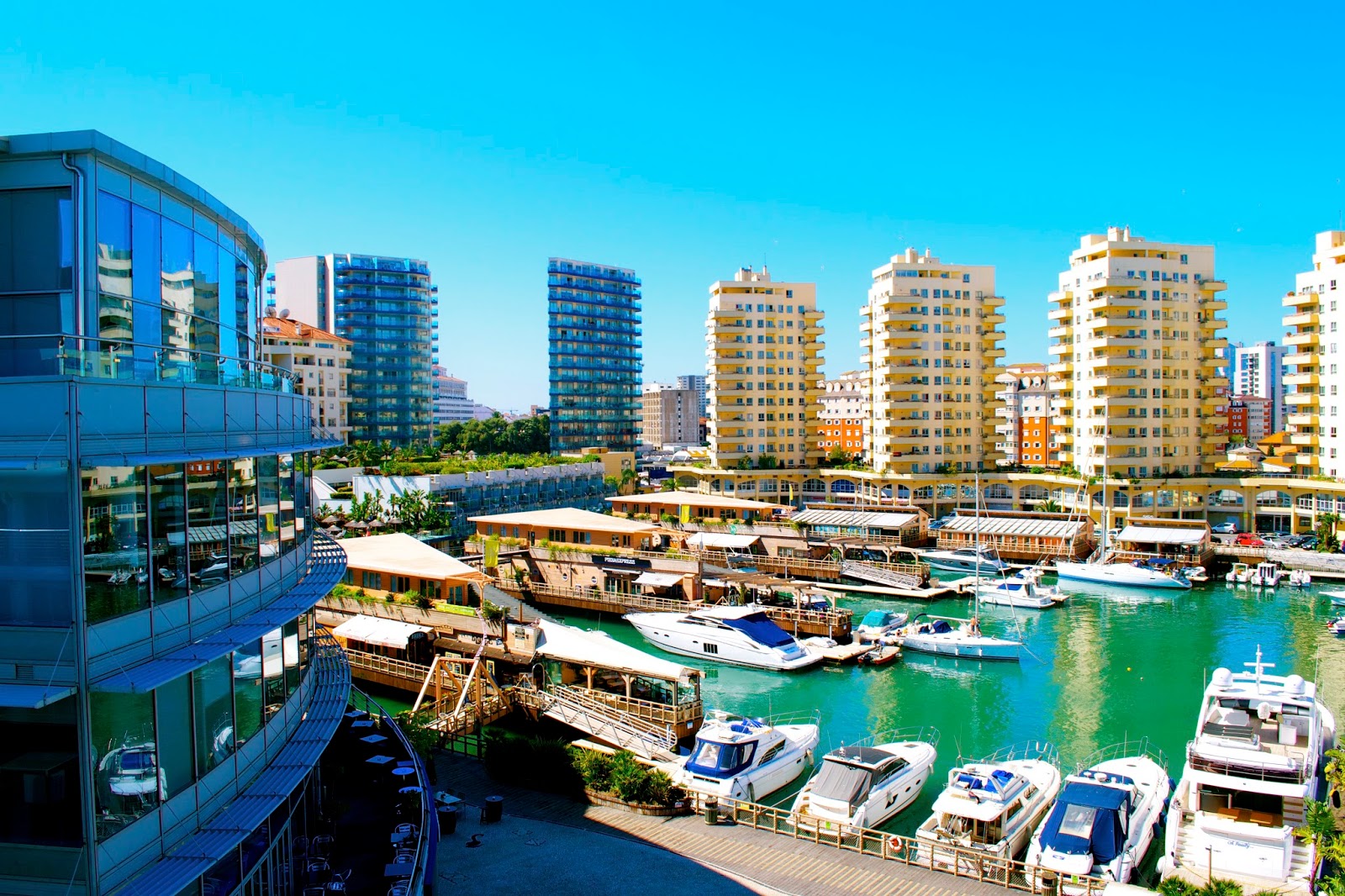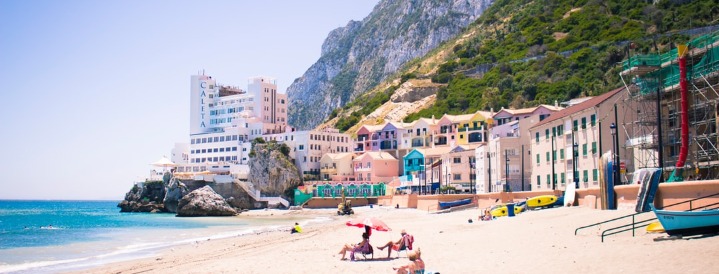Gibraltar, capital city of Gibraltar
Gibraltar is an intriguing destination for the curious traveler. The British territory is only 6.8 square kilometers, making it easy to explore on foot, and its location at the entrance of the Mediterranean south of Spain makes it a good jumping-off point for further travels. The landscape is dotted with caves and tunnels, Gibraltar has a rich, swashbuckling history and its underlying Britishness makes it a perfect destination for pub- and tea-lovers who also crave the sunshine.
Naturally, the main sight in Gibraltar is The Rock. The limestone ridge rises to 426 meters before plunging into sheer cliffs on the eastern and northern sides. This was one of Hercules’ two pillars for the ancient Romans and Greeks, split from its counterpart in Morocco as the divine hero performed twelve arduous labors. The two awesome rocks signified the edge of the ancient world.

The upper Rock’s nature reserve offers spectacular views of the town and sea below. The reserve is also home to the only free-living primates on the entire continent. Over 240 Barbary Macaques thrive around the Apes’ Den, an area close to the center cable-car station. According to local legend, the British will disappear from Gibraltar when the tailless apes do.
Summer is the best time to observe the playful creatures with their newborns, but visitors should keep a safe distance to avoid their infamous short tempers and sharp teeth. The official guides know the habits and moods of the apes and can be hired through the territory’s Ornithological and Natural History Society.
North of the Apes’ Den is St. Michael’s Cave, a large natural grotto that once played host to the Rock’s Neolithic inhabitants. Fashion shows, plays, and concerts are often held there, and you can see Morocco on a clear day from the outdoor cafe.
The interior of the Rock is marked by tunnels, many of which were hewn out by British hands during the siege of 1779 to 1783. Used as gun emplacements, the Great Siege Tunnels are part of the over 70 kilometers of tunnels that wind through the Rock. Others include the tunnels where the invasion of North Africa was planned by the Allies during the Second World War.
About a half-hour’s walk downhill from the upmost cable-car station is Princess Caroline’s Battery. The Military Heritage Center is inside, offering tours of the tunnels and gun emplacements.
The territory’s first lighthouse stands at its southern tip, known as Europa Point. The legendary pirate Barbarossa sacked the lighthouse, and the site is also home to the Christian Shrine of Our Lady of Europe. A statue of the Virgin and Child was erected there in the 15th century. It miraculously survived multiple attacks by pirates and still stands there today.
The British side of Gibraltar is most evident on Main Street. The pedestrianized drag is lined with cozy pubs, charming tea shops and busy restaurants. Although it looks like it could be a street in London, a distinctly Spanish lilt is still in the air, reminding visitors that they are indeed in Mediterranean Europe.
Not far from Main Street is the Ibrahim Al Ibrahim Mosque, a symbol of the religious and racial symbiosis of the territory’s past. Opened in 1997, the mosque was built by King Fahd of Saudi Arabia to feed the religious needs of Moroccans working on the Rock, and it is the largest mosque in the non-Islamic world.
Gibraltar Geographical Location
The city of Gibraltar is located on the western coast of the small peninsula Gibraltar.
The population of the British Overseas Territory is 30,000 people.
Gibraltar Language
English is the official language of Gibraltar although Llanito is used locally. Spanish is also common due to Gibraltar’s close proximity to Spain.
Gibraltar Predominant Religion
- 78% Roman Catholic
- 7% Church of England
- 3% Other Christian
- 4% Muslim
- 2% Jewish
- 2% Hindu
- 1% Other
- 3% None
Christianity is very common in Gibraltar due largely to the British presence.
Gibraltar Currency
The Gibraltar Pound, which is equal to the British Pound and exchangeable at British banks, is the official currency of Gibraltar.
Gibraltar Climate
Gibraltar is a subtropical-Mediterranean climate and is normally warm throughout the year. The summer is typically dry with rain occurring mostly during the winter months.
Gibraltar Main Attractions
- The Rock of Gibraltar
- World War II Tunnels
- Gibraltar Museum
Other Attraction in Gibraltar
- Apes Den
- St. Michael’s Cave
- The Great Seige Tunnels
- Mediterranean Steps
